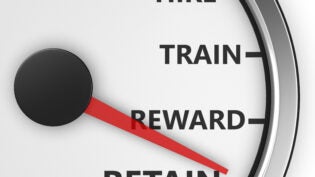How to Successfully Deal with Workplace Fatigue
By: SmallBizClub

There’s no question that worker training programs are a sound investment. The only question is what elements should be included to provide the most benefits to employees while increasing company profits. Advances in modern technology have increased the pace of life while blurring the lines between personal and professional lives.
That’s why an important element of any comprehensive employee training program should include effective strategies to avoid workplace fatigue.
Workplace Fatigue
Safety equipment manufacturers know more than most about workplace safety, and one of the most common reasons for workplace injuries is fatigue. Fatigue has been defined as a “reduction in functional capacities due to the cumulative effects of physical and/or psychological effort expenditure in the absence of sufficient recovery time or rest.”
When developing and implementing regulations for the long haul road transport industry, WorkCover NSW pointed out that “fatigue influences an individual’s physical, mental and emotional state, which may result in less alertness, accompanied by poor judgment, slower reactions to events and decreased motor skill.”
Those side effects are proving costly, both personally and professionally. The results of one study concluded that lost productivity due to fatigue costs businesses approximately $136 billion dollars every year. Research has also shown that fatigue can also contribute to obesity, which also affects job performance.
A 2010 report released by Duke University showed that the cost of obesity-related health problems, including absenteeism and lost productivity is over 73 billion dollars per year. It’s all too easy for a fatigued employee in need of rest to reach for a sugary snack for a quick burst of energy instead.
Causes
Some of the things that can cause fatigue in the workplace include:
- Shift work – The human body’s natural circadian rhythms can be disrupted by shift work, resulting in sleep deprivation. Workers subject to rotating shifts are especially vulnerable to this type of fatigue.
- Working Conditions– Long or irregular work hours, hard physical labor, excessive noise, and temperature extremes can all contribute to workplace fatigue. Boredom, working alone with little or no interaction with others, and prolonged fixed concentration on repetitive tasks are also potential causes.
- Workplace stress – Complex repetitive tasks, heavy workloads, conflicts with bosses or colleagues, and frequent change are some of the stressors that can result in fatigue. Interpersonal skills training can help reduce workplace stress.
- Burnout –Burnout can result when employees are unable to achieve a balance between their careers and their social lives. Without the restorative benefits of enjoyable personal and social activities, workplace motivation can plummet.
Solutions
Experts recommend that all companies implement a fatigue risk management system (FRMS). An FRMS includes training for employees in recognizing the symptoms of fatigue in themselves and others, as well as methods for measuring levels of fatigue.
There is some excellent software available designed specifically for this purpose. It can help automate processes that reduce the risk of fatigue, such as sending periodic notifications to employees to monitor and report on their current physical condition. This makes it possible for managers to detect patterns and determine when individuals are most likely to be operating at peak performance levels.
Teaming employees up with one another is another good strategy. Teamwork eliminates the factor of social isolation, and many companies now assign new employees a company mentor. Teamwork makes it possible for employees to more easily observe and report signs of fatigue, as well as reduce the potentially negative consequences of it.
Daniel Frings, a social psychology Ph.D. at London South Bank University conducted a study that concluded that teams display better problem-solving skills than individuals when fatigued. He says that “Team members can compare solutions to reach the best decision when they are fatigued…and avoid the inflexible thinking experienced by fatigued individuals.”
According to industry expert Leslie Tarnacki, a fatigue management system doesn’t just increase profits by raising morale and boosting productivity. It also reduces losses by decreasing absenteeism, accidents, and injuries. All of those things are expensive for employers, and the litigation that often results from a preventable workplace injury is even more so.
Many companies have been forced out of business by a large jury award. That’s why whatever employee training program you choose, it should include strategies to avoid fatigue.
 Author: Philip Piletic is a freelancer, writer and traveler who loves to share his experience about business, marketing and tech. Thanks to Bremco for their help with this article. Follow @bremcometalproducts on Facebook.
Author: Philip Piletic is a freelancer, writer and traveler who loves to share his experience about business, marketing and tech. Thanks to Bremco for their help with this article. Follow @bremcometalproducts on Facebook.
3862 Views












